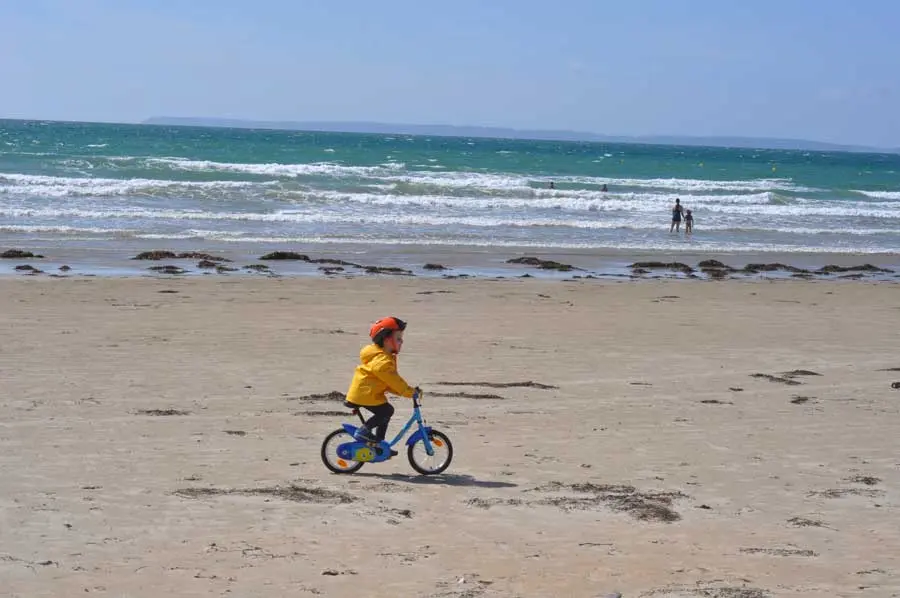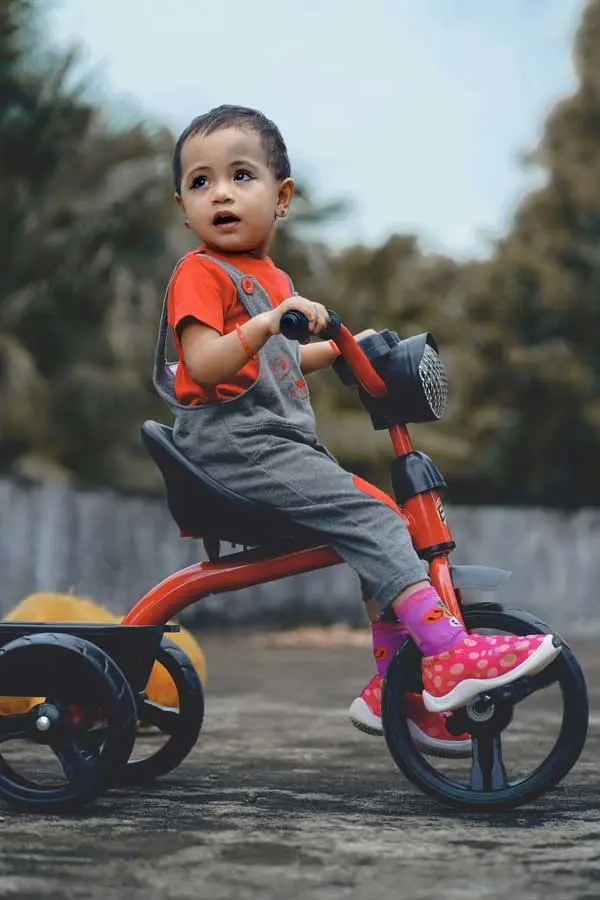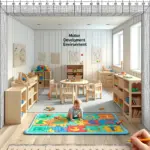
Imagine the first time your child, wobbling on their tiny bike, finally finds their rhythm, pedaling away into a burst of laughter and sunshine. That moment, when they glance back at you, eyes wide with the thrill of independence, marks a significant chapter in their life—and yours. This isn’t just about how to teach bike riding; it’s about embarking on a journey together, one filled with growth, balance, and discovery. As we unfold the pages of this guide, we’ll explore the tapestry of skills that form the foundation of bike riding, guiding you from those initial shaky starts to the exhilarating freedom of a successful solo ride.
Riding a bike weaves together a complex set of skills, each thread as crucial as the next. Follow the ‘How to Teach Bike Riding’ path to see your child evolve from cautious balancing to confident riding. Let’s journey through these developmental milestones:
Balance Mastery: Picture your child, perched on their bike, learning the delicate art of balance. It’s not just about staying upright; it’s about mastering the subtle language of body movements, where each slight tilt and turn brings them closer to harmony with their bike. Balance is key in bike riding and life. And in carrying a tray of snacks to the couch.
Motor Coordination: Recall the first time you watched them try to pat their head while rubbing their stomach. Bike riding is much the same, a dance of coordination where hands and feet move in concert, steering and pedaling towards adventure.
Muscle Strength: Those little legs need to push and pull with enough force to set the bike in motion and keep it going, especially up hills or during starts.
Spatial Awareness: Navigating through space without bumping into obstacles requires a keen sense of one’s surroundings, a skill sharpened with every ride.
Focus and Multitasking: Observe them as they learn to juggle the various aspects of riding—balancing, pedaling, steering, and watching out for obstacles—all while reveling in the joy of the ride.
Self-confidence – lessons Beyond the Bike: How to Teach Bike Riding is about more than just cycling; you’re fostering a sense of self-confidence that will serve them in all aspects of life. Each fall and rise is a metaphor for life’s challenges, teaching them that with courage and persistence, they can achieve anything they set their minds to.
Resilience: Remember, the path to riding is paved with skinned knees and tumbles. It’s in getting back up, in pushing past the falls, that your child learns one of life’s most enduring lessons: perseverance.
The Journey Begins Early: Contrary to popular belief, bike riding skills start developing right from infancy, as babies begin to explore balance and movement. Engaging in balance-enhancing activities, from simple play to more structured exercises, lays the foundation for future cyclists. Why couldn’t the bicycle stand up by itself? It was two-tired—much like me after a bike-riding lesson.
Step-by-Step Guide to Bike Riding:
Teaching your child to ride a bike can be transformed into a more fluid and enriching experience by integrating a balance bike, a tricycle, and a traditional bicycle into their learning journey. This trio of cycling tools enables your child to seamlessly transition from one to another, simultaneously honing the unique set of skills each one offers. This approach not only diversifies their learning experience but also accelerates their overall skill acquisition in cycling. For those who might not have a balance bike, some articles suggest that you can convert a traditional bicycle into a balance bike by removing the pedals, providing a similar learning experience. For more insights on this, you might find this article particularly useful.
The Balance Bike: This pedal-less wonder is the first step in translating innate balance skills into bike riding prowess. It teaches children how subtle shifts in weight control the bike’s movement, laying the groundwork for more advanced skills. It subtly teaches the child that steering the handlebars to the left results in a gentle shift of balance towards the right, a fundamental principle in bike riding.
The Transition to Two Wheels: Combining the balance skills from the balance bike with the pedaling experience from the tricycle, children are now ready to face the two-wheeled challenge. The right time to remove training wheels varies; observation and intuition will be your guides.
The Tricycle: While it might seem like a step back, tricycles allow children to focus on pedaling mechanics without the added challenge of balancing on two wheels.

Final Reflections of a Parent’s Journey: Imagine the day when, under the golden hue of the afternoon sun, your child’s laughter fills the air as they pedal forward, no longer wobbly but assured. They glance back, a silent thank you in their eyes, marking not just a milestone but the beginning of many adventures to come. This guide has been more than just about teaching bike riding; it’s been a shared expedition of growth, teaching us that every fall and rise is a step towards independence, both for our children and ourselves. Remember, every great cyclist started just like your child: with a great parent running behind them!
Join the Conversation: Have a bike-riding story to tell? We’re all ears! Share with us the age your child learned to ride, the hurdles you both overcame, and the joyous moments of success. Your journey can light the way for others, so don’t hesitate to contribute your story.




